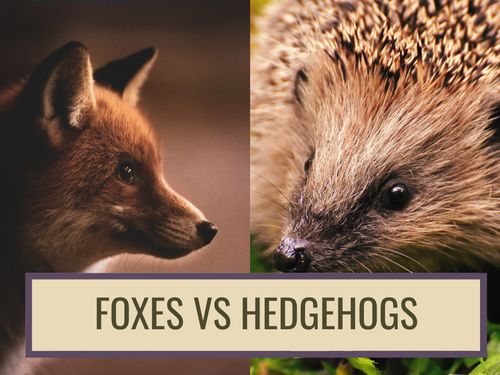The tragedy of Tolstoy
Sep 09, 2021 · 2 mins read
0
Share

In his classic essay, The Hedgehog and the Fox, Isaiah Berlin argues there are two fundamental types of people: foxes and hedgehogs. Berlin discusses the deep differences between the two, and digs into the exceptional case of Tolstoy, a genius stranded in the middle
Save
Share
Hedgehog. There’s a Greek saying, “The fox knows many things, but the hedgehog knows one big thing.” For hedgehogs, the one big thing is a “single central vision” that connects different experiences and varied facts. Hedgehogs arrange what they know in holistic frameworks.
Save
Share
Foxes. Foxes, on the other hand, believe “no theories can possibly fit the immense variety of possible human behaviour.” The mind of a fox is scattered, and capable of pursuing many different ends that may be “unrelated and even contradictory.”
Save
Share
Famous hedgehogs. For Berlin, Nietzsche, Plato, and Dostoevsky are some famous hedgehogs. They had a “fanatical inner vision.” They connected different strands of knowledge with a thread that united them all. Their philosophy has a panoramic quality: wide and all-inclusive.
Save
Share
Famous foxes. Berlin considers Herodotus, Aristotle, and Goethe to be foxes. Their vision of life was less panoramic and more kaleidoscopic. Foxes notice specific cases over general categories. For a fox life has a “vast multiplicity” that can’t be reduced to a single principle.
Save
Share
Tolstoy: an exceptional case. Berlin writes Tolstoy was a fox who desperately yearned to be a hedgehog. Tolstoy was hyper-sensitive to the minute details that compose life, and yet he wanted a universal story that connected it all.
Save
Share
Tolstoy the fox. Tolstoy had “an incurable love of the concrete, the empirical, and the verifiable.” He intuitively distrusted anything abstract, and mocked Napoleon in War and Peace as Napoleon was a “master theorist” chasing a singular vision.
Save
Share
Tolstoy the hedgehog. However, Tolstoy also had a strong “desire to penetrate to first causes.” He longed for “a universal explanatory principle” that made the chaos of life more coherent. But the gap between what he wanted and who he was, was too big to bridge.
Save
Share
Tolstoy’s tragedy. Tolstoy “looked for a harmonious universe, but everywhere found war and disorder.” Tolstoy was a “battering-ram” that attacked weak metaphysical structures, but his deepest spiritual need was to be stopped by an immovable obstacle. It was not to be.
Save
Share
Berlin describes Tolstoy as “a fox bitterly intent upon seeing like a hedgehog.” Tolstoy was “by nature not a visionary.” His ability to perceive differences, specificities, and idiosyncrasies left his desire for “a vision of the whole'' unfulfilled.
Follow me for more!
Save
Share
0